Upskilling vs Reskilling: Key Differences & Which One You Really Need
Upskilling vs reskilling: learn the key differences, see real examples, and find out which path is right for your career growth.
Upskilling vs reskilling: learn the key differences, see real examples, and find out which path is right for your career growth.
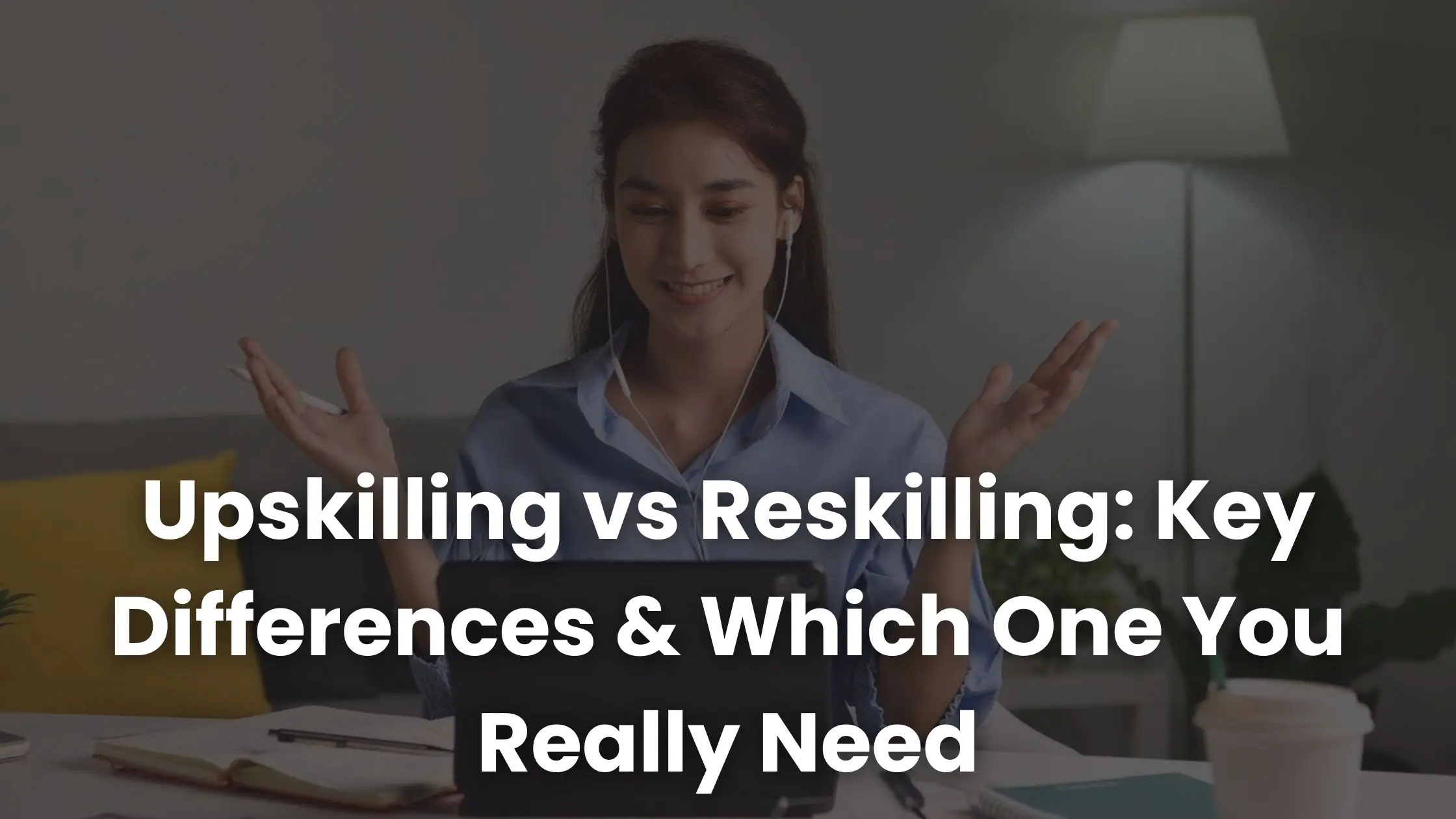
Rapid shifts in tech, business models, plus workplace expectations push many professionals to rethink how they grow. Skill gaps keep widening, with studies noting that most workers feel disruption coming and show a strong willingness to learn fresh abilities.
On top of that, research highlights a short skill life cycle, which means knowledge fades in value much faster than before. This pressure often brings people to one key decision: upskilling vs reskilling.
This guide breaks down each path in simple terms, highlights how they differ, and helps you choose the right direction for long-term career strength.
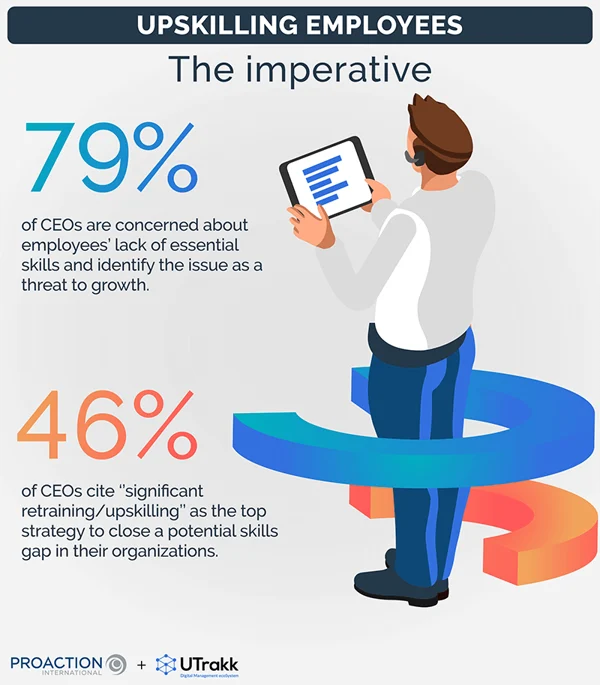
Upskilling adds new strength to skills someone already holds. Instead of switching fields, a person deepens expertise, sharpens existing abilities, and builds fresh confidence in the work they already do. This kind of growth often unlocks higher-level tasks, leadership moments, plus smoother progress along a current career path.
Think of it like this: a marketer who studies rising social platforms or fresh digital tools boosts day-to-day performance while also opening doors to future roles with bigger influence.
For companies, upskilling works as a long-term strategy, not a one-off training push. Leaders who invest in steady learning usually keep strong talent longer, strengthen culture, and support healthier teams.

Pro tip: Upskilling platforms make this process easier by recommending personalised learning paths and helping people build new skills step by step.
Experts also highlight a major shift toward “hybrid jobs,” where technical depth blends with human skills like communication, problem-solving, and creative thinking. With tech evolving fast, this mix delivers huge value.
Upskilling helps individuals grow, helps companies stay competitive, plus builds a foundation for continuous learning across the entire workplace.
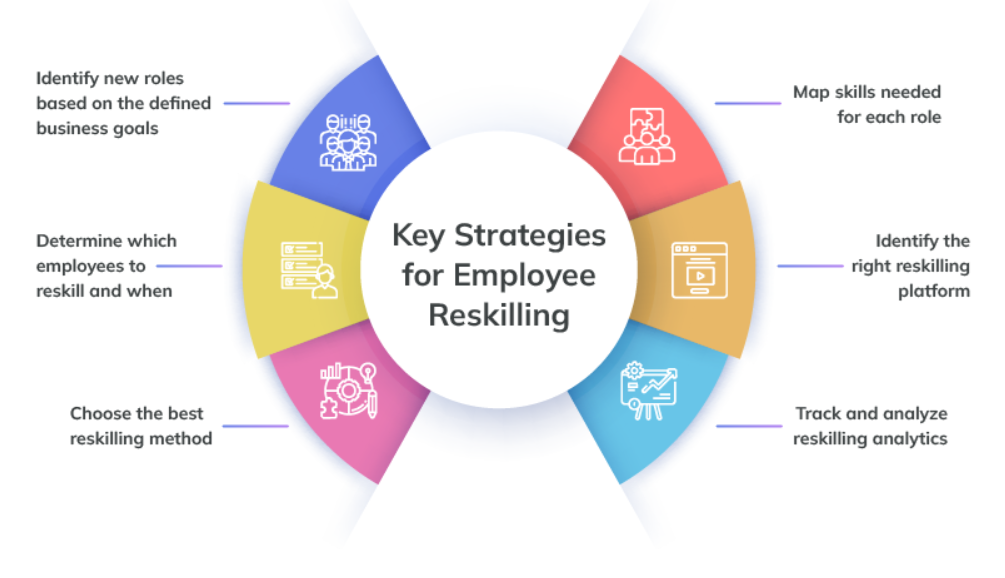
Reskilling helps someone shift into fresh territory by learning skills outside their usual toolkit, like generative AI skills. Instead of building deeper strength in current duties, a person prepares for different work entirely, often because tech, systems, or business needs push old tasks out of focus.
Leaders often choose this path when they want to keep a high-performing teammate who understands company culture, workflows, plus customer needs. Fresh training simply gives that person the tools needed for a new direction. This might include certifications, new degrees, or focused education in a completely different field.
Large companies already use this approach. For instance, Amazon rolled out huge retraining efforts to move warehouse staff toward IT roles and guide junior coders toward data-focused positions. Moves like this help organizations keep trusted workers, cut turnover, and fill future roles faster.
Still, reskilling goes beyond technical learning. People must drop long-held habits, handle mistakes, rethink identity, plus build confidence without tying self-worth to job titles. Without this mindset shift, many career transitions hit roadblocks.
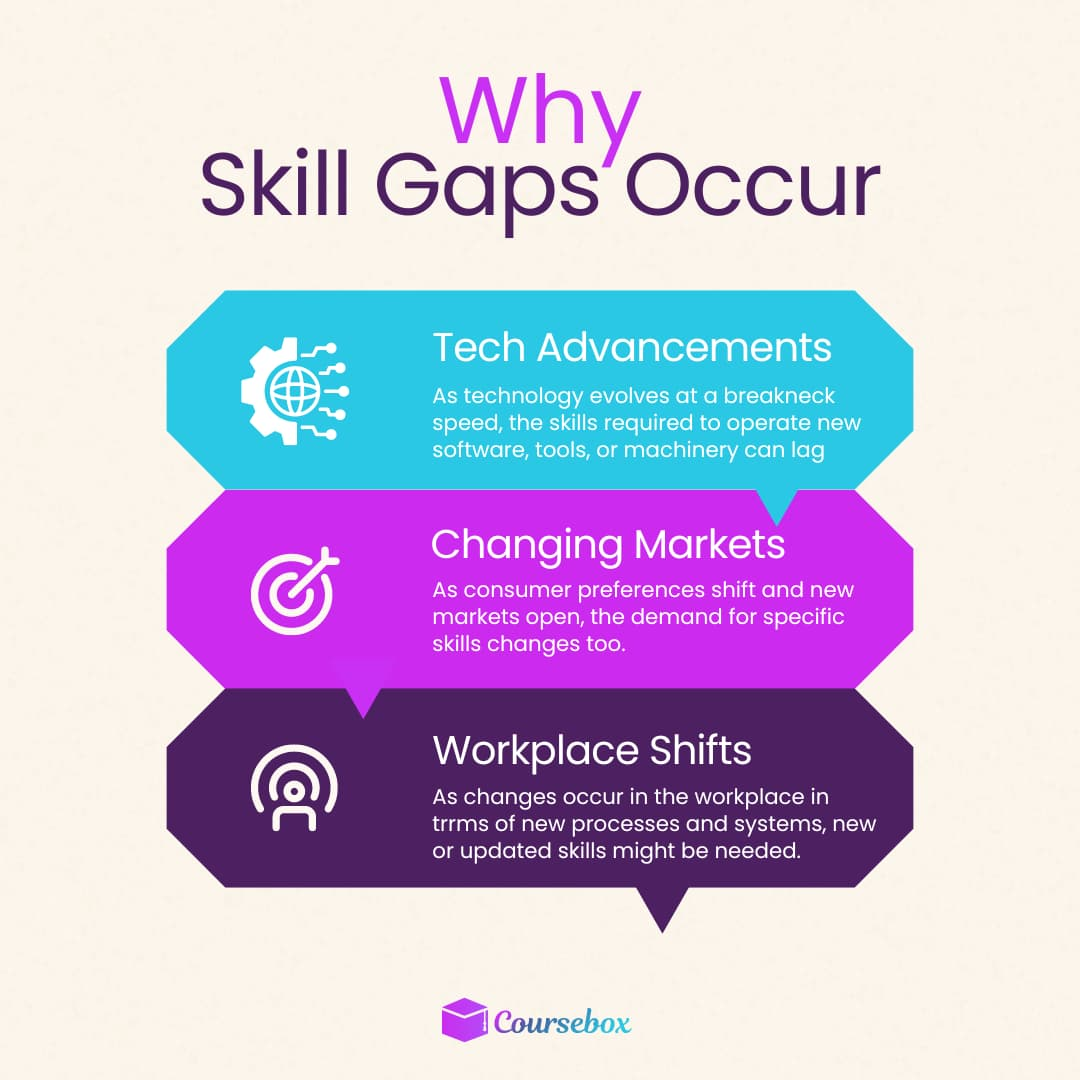
Skill gaps grow when companies wait too long to act or only chase technical requirements while ignoring human skills like critical thinking or problem-solving. Continuous evaluation, wider skill development, plus steady learning give teams a stronger footing—setting the stage for a healthier “new skilling” culture across the whole workforce.
Upskilling and reskilling share one purpose, which is helping people grow, but each path leads to a different destination. Upskilling builds strength along a current track, while reskilling shifts someone toward fresh duties. Both support long-term career progress, plus help companies stay flexible in a world moving faster every year.
Picture Lia, a production designer with a growing interest in motion graphics. When her company expands into video work, she uses learning funds to study motion design. Fresh skills lift her into a new, higher-impact role without leaving a team she loves. That’s upskilling in action.
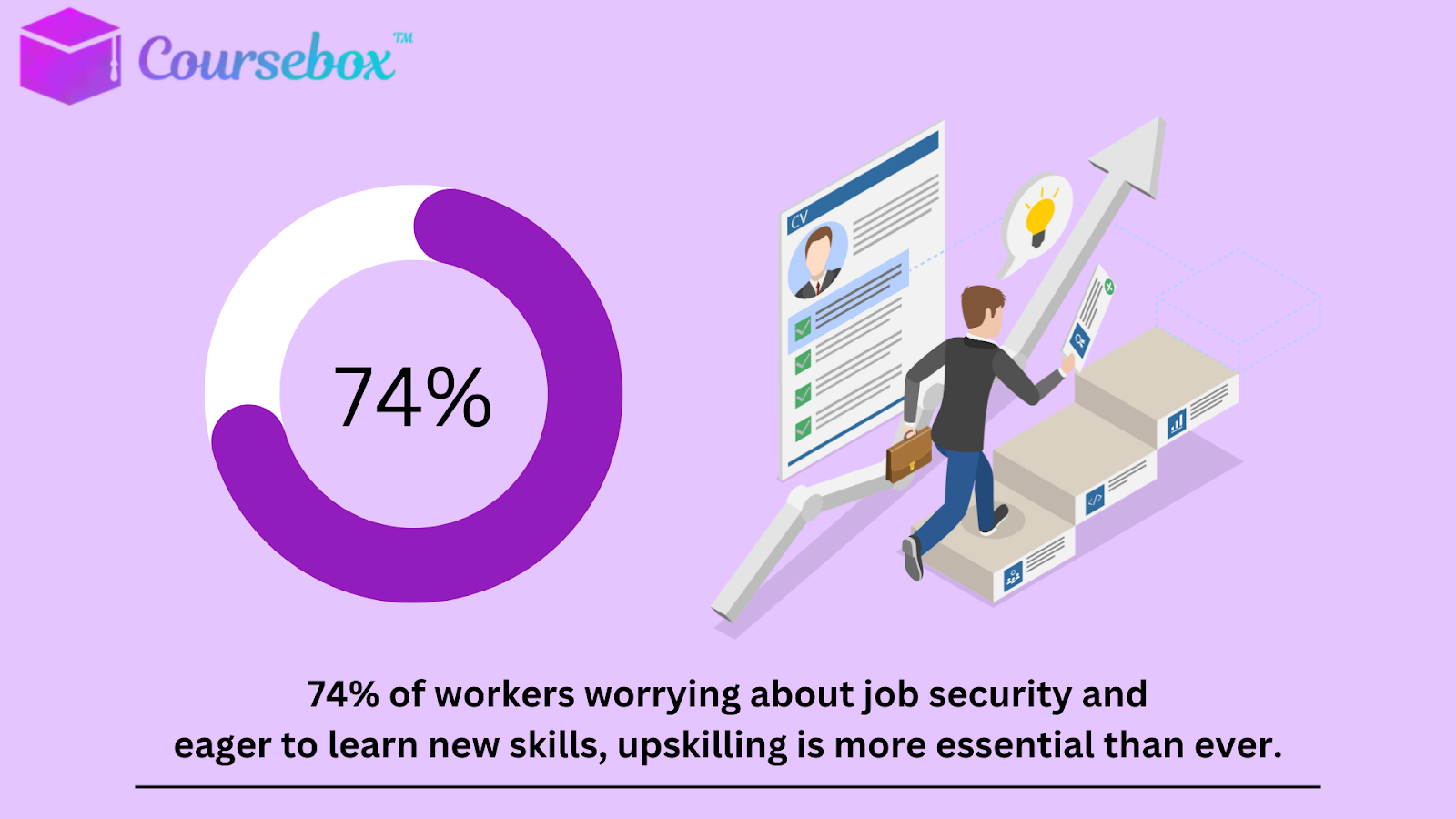
Now, picture Taylor, a seasoned painter in a business shifting toward automation. Leadership values Taylor’s deep product knowledge, so instead of letting that experience slip away, they help Taylor retrain as a CAD specialist. New skills open a new door inside the same company. That’s reskilling—lateral movement with huge upside.
Workplaces keep changing—faster tech cycles, remote environments, and higher expectations for flexibility, so learning programs play a crucial role in keeping teams steady. Strong development support also helps companies attract top talent.

Interesting: People look for employers who invest in their growth. Additionally, those who feel supported speak more positively about their workplace, lifting the employer's reputation.
When people see real pathways forward, they stay longer, explore new roles, plus contribute more. Companies with strong internal mobility often hold onto talent almost twice as long compared to those with weaker development efforts.
In short, skill-building closes gaps, fuels motivation, and strengthens culture. Upskilling and reskilling lift both people and business goals, creating a workplace where growth feels possible every day.

Upskilling and reskilling both help people grow, but in different ways. Upskilling strengthens skills you already use, helping you advance in your current role. Reskilling prepares you for a completely new job or industry. Below is a breakdown of the key differences, with examples, ways to learn, and tools.
Upskilling helps you climb higher within your current field. For example, a marketer learning deeper analytics or a designer picking up motion graphics can take on more complex projects. Quick courses, certifications, or short workshops work well here, and AI-powered platforms make it easy to build tailored learning paths.

Reskilling takes you in a new direction. A retail manager moving into web development or an accountant learning UX design starts a fresh career path. Longer, structured programs, boot camps, or hands-on practice fit best. Coursebox AI can guide learners through step-by-step paths to master these entirely new skills.
Upskilling focuses on improving current skills to boost performance, handle new tools, and prepare for higher-level responsibilities. Reskilling, on the other hand, helps you develop new abilities to succeed in a different role or industry when old skills no longer match business needs.
Upskilling builds depth—advanced techniques, sharper problem-solving, or stronger performance in familiar tasks. In contrast, reskilling introduces new abilities, from IT support to UX design or data analysis, depending on your target role.
Upskilling supports upward movement, like promotions, leadership opportunities, or higher-impact projects. Reskilling supports lateral moves, shifting into new roles, exploring emerging industries, or adapting to automation-driven changes instead of fearing AI will steal their job.

Upskilling works well with shorter learning bursts: webinars, online courses, conferences, or industry reading. Platforms like Coursebox AI help learners create quick, tailored programs.
Reskilling usually needs more structured learning: degrees, intensive boot camps, or practical experience. Tools like Coursebox AI, EY Skills Foundry, and Thirst help design full learning paths for career transitions.

Upskilling often fits into weeks or even days with targeted courses, while reskilling takes longer since it requires learning unfamiliar skills from scratch, often over several months.
Upskilling strengthens teams, improves performance, and develops future leaders without hiring externally. On the other hand, reskilling keeps trusted employees, reduces turnover, and supports internal mobility, which helps companies adapt quickly to changing business needs.

Both paths pay off. For individuals, they bring higher earning potential, greater job security, and stronger confidence. For companies, skill-building lowers turnover, boosts productivity, and creates a flexible workforce ready for change. Investing in learning benefits everyone.
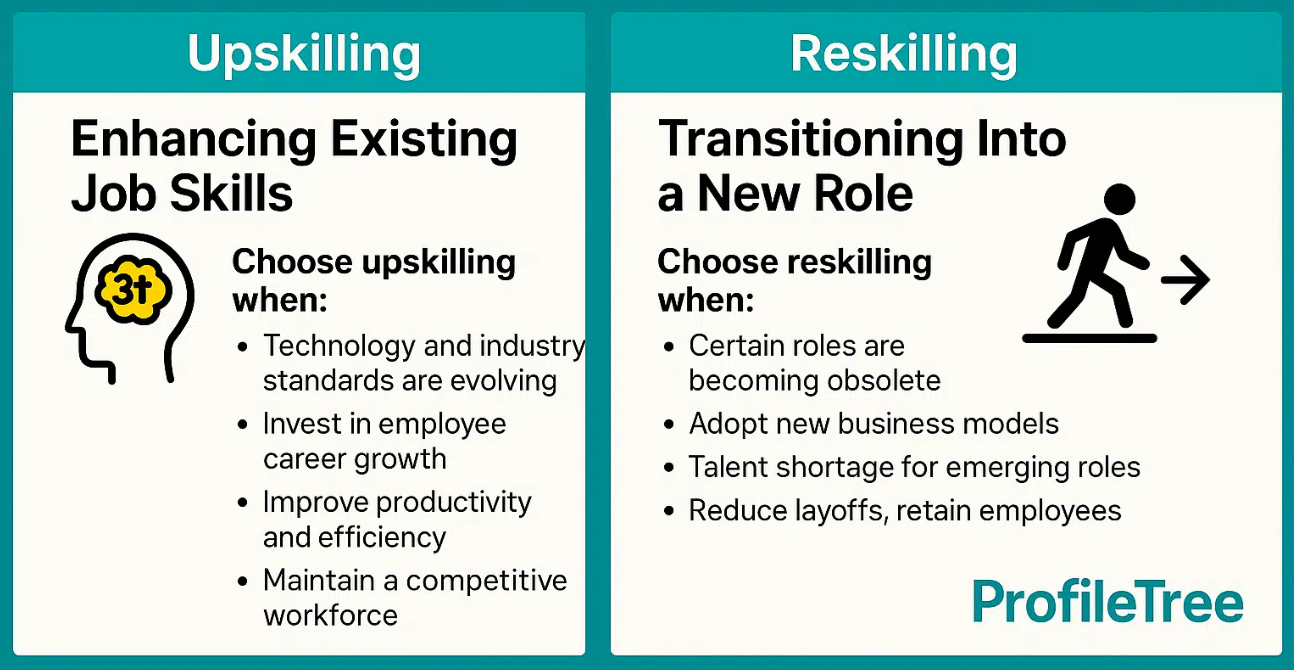
Choosing the right path comes down to your current role, goals, and the skills you want to grow. Use this simple guide to decide:
Pro Tip: Use Coursebox AI to create interactive courses or guided learning paths for either approach, track progress, and master new skills efficiently.
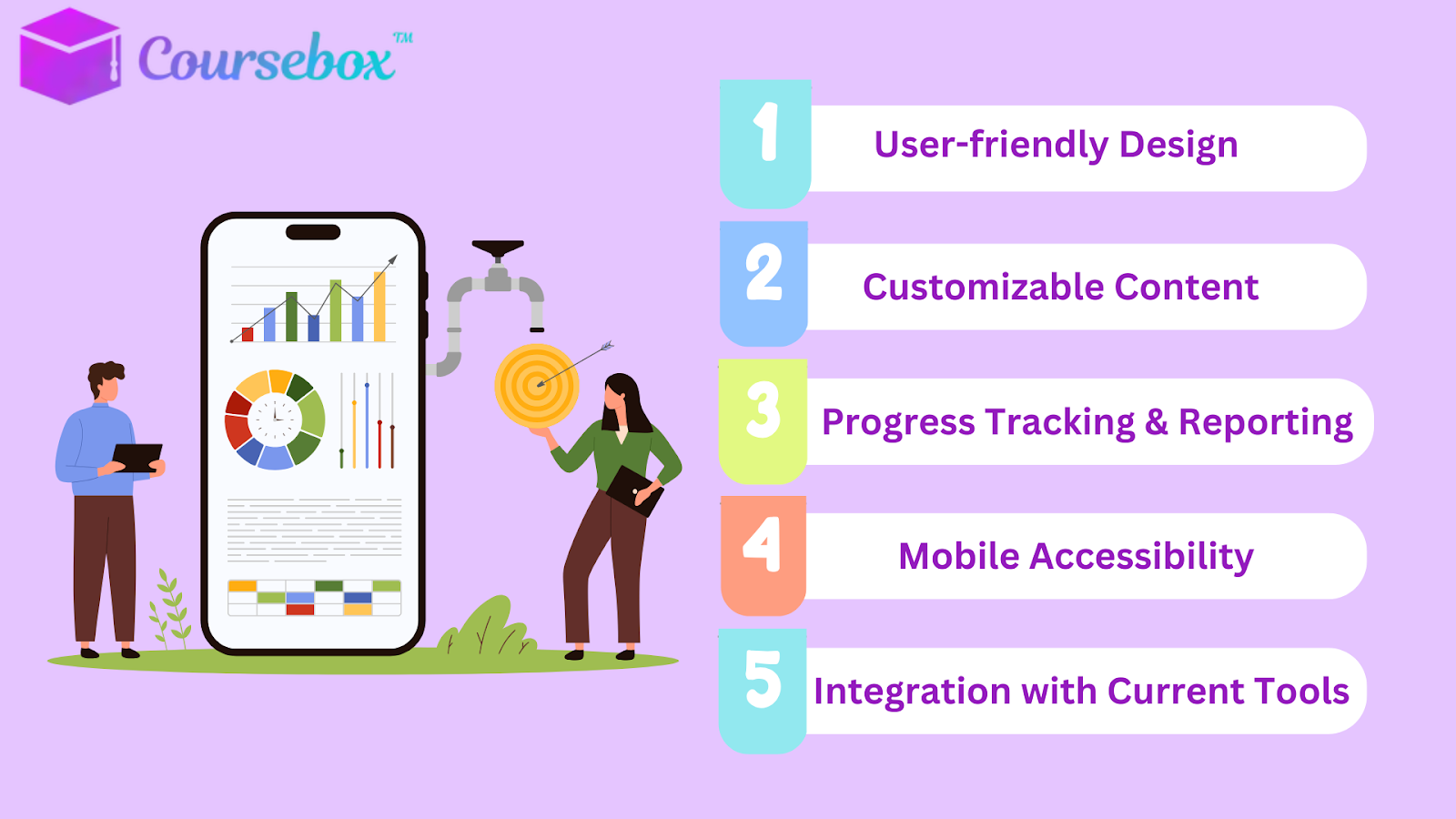
Upskilling and reskilling deliver major benefits for both individuals and organizations. Recent studies show that 70% of workers would switch jobs for opportunities to learn new skills, and 58% need new skills to perform effectively today.
Whether you’re deepening current expertise or learning completely new abilities, investing in skill growth boosts career readiness, job satisfaction, and long-term employability.
Investing in skills pays off: higher productivity, lower turnover, and stronger career growth. Explore Coursebox AI today and make continuous learning a reality for your team.
Upskilling: A digital marketer learning advanced analytics to improve campaign performance.
Reskilling: A retail manager training to become a web developer. Both paths enhance career growth, either by deepening current skills or by preparing for a completely new role.
Upskilling means building upon existing skills to improve performance in your current role. It helps employees stay competitive, take on higher-level responsibilities, and adapt to new tools or technologies within their field.
Skill development typically progresses through these stages:
Reskilling equips employees with new skills for a different role or industry. It helps individuals adapt to changing job requirements, supports career transitions, and allows companies to retain experienced talent while meeting evolving business needs.
Employees looking to switch roles or industries benefit most from reskilling. Companies also gain, as reskilling retains valuable staff, reduces turnover, and ensures teams have the skills needed to adapt to technological or market changes.
Reskilling means learning completely new skills to prepare for a different role, function, or industry. Unlike upskilling, which builds on existing abilities, reskilling helps employees pivot into new career paths and meet evolving business demands.
Yes, upskilling is correct. It refers to learning additional skills to enhance your current role, boost productivity, and advance within your career path. Many organizations use upskilling programs to improve employee performance and retain top talent.
